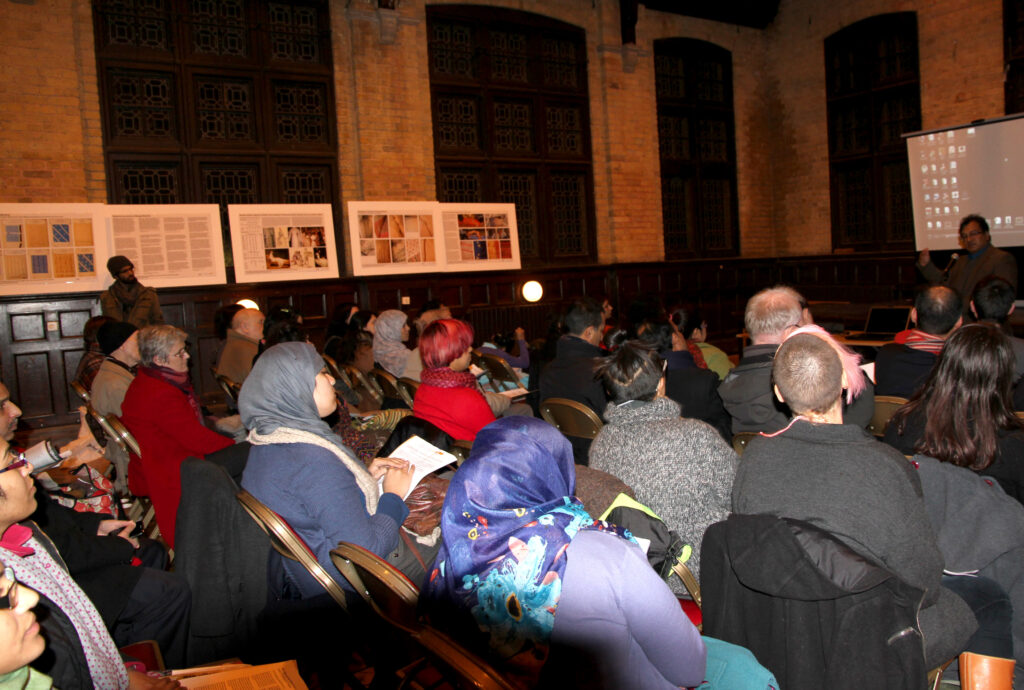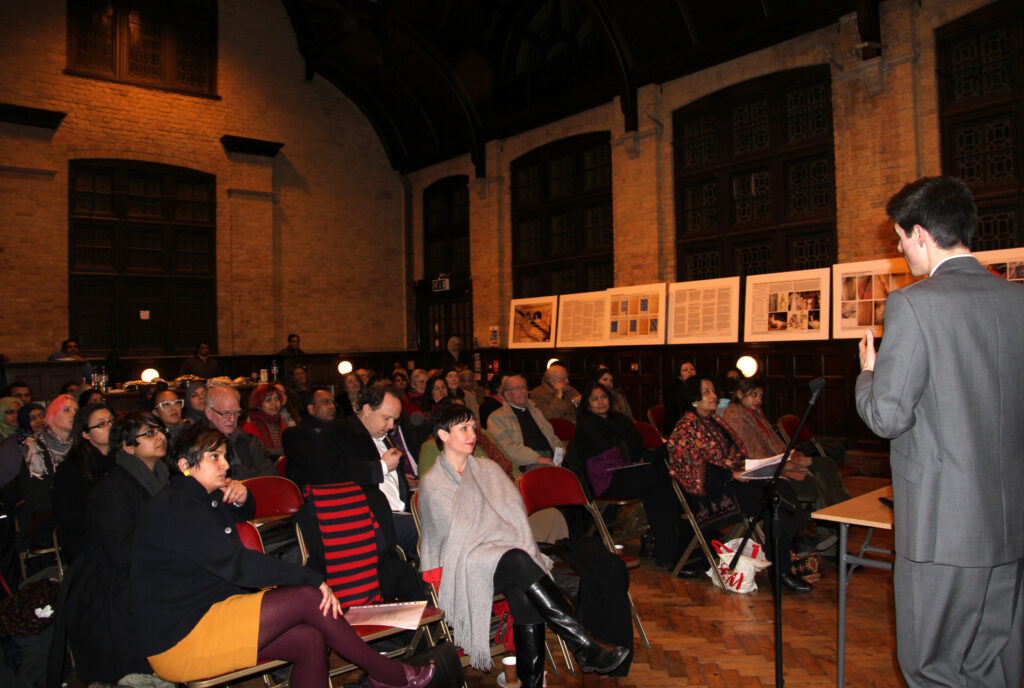
An open evening launch was organised on 8th February 2012 to promote the project and attract potential volunteers to participate in recreating historical dresses. The event consisted of an exhibition on Bengal muslins in history, presentations from several experts from the V&A (Sonia Ashmore) and National Maritime Museum (Dr John McAleer, former curator), Rezia Wahid (weaver), Mia Walden (illustrator and costumier) and two short videos on muslin textiles. Professor Sharif Uddin Ahmed from Bangladesh, Professor Mushtak Ahmed from (School of Oriental and African Studies) in London, Dipak Basu and Sonia Ashmore featured in the video and spoke about the famous textiles. The event was well attended, made up of people from London’s diverse communities. Many participants asked questions and sought clarifications, in terms of commitment, involvement, time, etc. The application deadline was set for 9th March 2012. Trust continued to undertake further outreach and promotional work to raise awareness of the project to generate more interest.

In total the project recruited twelve individual volunteers and they were called Heritage Fashion Recreators. A number of distinct phases were involved in the delivery of the project, and each phase was broken down into several separate parts. The steps in the first phase were designed to enable the participants to feel more confident about fashion designing and learn about the multi-dimensional story of Bengal textiles in British fashion history. This was considered as necessary and valuable preparatory steps before embarking on the complex tasks involved in actual recreations and creations. Every participant was required to produce two items, one a recreation of an actual dress and another a creative item based on the knowledge gained of fashion of the period.
In total, the project recruited twelve individual volunteers and they were called Heritage Fashion Recreators. A number of distinct phases were involved in the delivery of the project, and each phase was broken down into several separate parts. The steps in the first phase were designed to enable the participants to feel more confident about fashion designing and learn about the multi-dimensional story of Bengal textiles in British fashion history. These were considered as necessary and valuable preparatory steps before embarking on the complex tasks involved in actual recreations and creations. Every participant was required to produce two items, one a recreation of an actual dress and another a creative item based on the knowledge gained of fashion of the period.
How Villages and Towns in Bengal Dressed London Ladies in the 17th, 18th and early 19th centuries
